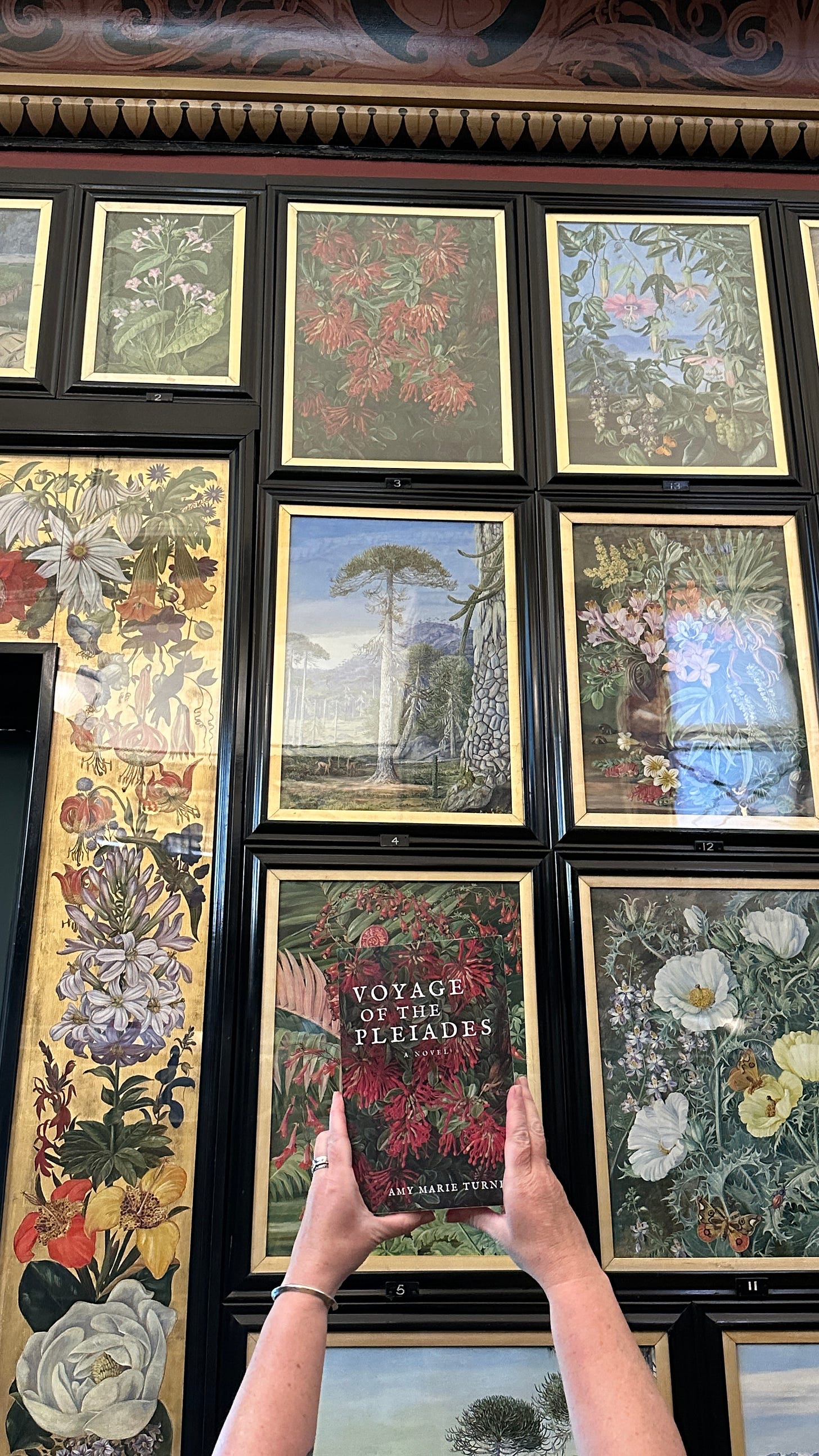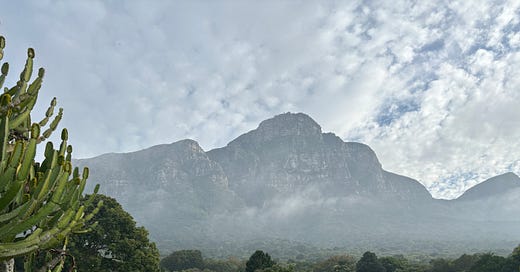March is Women’s History Month, since women in history are the subject of my books, I thought I would share a bit of my writing process.
I’ve mentioned Marianne North in other Substack posts. Not only would she have been a contemporary of Linnea’s, but they also share the privileges and bravery to forge their lives outside the norms for a Victorian woman. You might also be familiar with her as being the artist that created the images featured on my book covers.

When I decide on a location for my books, I begin the process of building my characters’ world. So far, I’ve purposely chosen places I have visited. My writing tends to lean heavily on sensory descriptions (for better or worse), as does my creative process. When I sit down at my keyboard, I need to be able to call up the landscape; the sounds, and the smells. Although my memories of Chiloé Island had faded by the time I wrote Voyage of the Pleiades, once I began drafting, they flooded in. Spain was more difficult. Garden of Shadows was written during lockdown, which kept me from traveling to Granada. I relied on walking tour videos, photographs, and historical accounts to help fill in the gaps. The third book, which I’m writing now, is set in the Western Cape of South Africa, where I went specifically for research last spring. It was the first time that I framed my traveling around collecting material for a book.
However, writing about a place at a point in history, especially when your characters are naturalists and interacting with the landscape, is tricky. Nature is always changing. Our climate has changed. Cities have expanded. Areas have been cleared for cultivation. It’s vital to my characters and my story that every attempt is made to make it as authentic as possible, which means research. A lot of research. Chiloé Island was the least altered between the time Linnea would have visited and my trips. The Alhambra was under-going restoration during the late 1800s. This made describing it more difficult. It was hard to pinpoint when certain areas were planted. Yet, the uncertainty also gave me freedom to take creative liberties. When in doubt, I rely on old maps, photographs, books, and always, first person accounts.

This returns us to Marianne North. The last two trips that Marianne took before remaining in England due to poor health, were to South Africa and Chile. She didn’t write much about her trip to Chile, and it wasn’t to Chiloé Island. But she wrote quite a bit about her trip to South Africa, and I’ve been revisiting her words often as I’m drafting. When Linnea (and Marianne) visited Cape Town and the Western and Eastern Cape in the last 1800s, it was very different from the area now. Fynbos that is confined to the slopes of Table Mountain, would have been more extensive. There would have been more native trees, more native plants. Those areas have been cleared and/or replaced with European introductions. My sensory notes from the Western Cape, will only go so far to paint a picture of what Linnea might have seen. It may seem simple to write a few sentences about what a character observes from the window of a train, or from the back of cart, but much research goes into crafting a view that would have been accurate. Doubly challenging when your characters are naturalists that would have been noting everything. When I get stuck or worry that I’m going off track with my descriptions, I turn to Marianne’s accounts.
Travel accounts from women during the late 1800s are rare. It was in part due to my frustration at that underrepresentation, that drove me towards creating Linnea. I hope that my books do justice to both the women whose voices were recorded, as well as those that were not. In Voyage of the Pleiades, I allude to Marianne North and Linnea as being correspondents, because I couldn’t ignore the significant role she plays in my stories. I owe a massive debt to the female naturalists that have gone before, they have shaped me, and my goals in writing historical fiction. Marianne North feels like a collaborator, a gentle muse nudging me to keep writing.
“One day we all went up to the top of the hill behind the house, a thousand feet of steep climb, where we got a lovely view of the distant sea and Table Mountain beyond. I found at the top plenty of small starry flowers of various colours, and large yellow thistles, many lovely bulbs, including the pink and white Hypoestes stellata, with eyes as changeable as the peacocks’ feathers. One could not tell if they were blue or green, far less paint them. We cooked kabobs, rice, and cakes, and drank strong coffee and wine, close to the muddy pool they call a spring.”
from, Abundant Beauty, by Marianne North.
*Not thrilled to give you an Amazon link to this book, but Bookshop does not carry it. I checked it out from the Helen Fowler Library at the Denver Botanic Garden, so it is possible your local library can order a copy for you.





To all the women who write, paint, travel and are courageously exploring elsewhere and elsewhen; those who have allowed us to be unashamedly ourselves; and to you Amy who is all these things.